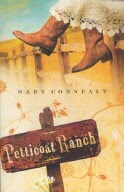Click here for part two
Once you have the internal conflict the characters begin to take shape. Because the internal conflict is often rooted in their past, their internal conflict is part of developing three dimensional characters. As you do that, you start to know how the h/h will react, what drives them, how will they speak and move. What sets them off, and what gets past their defenses?
You know you’ve written a really good book when you dig a chasm between them so deep that it’s almost (did I say almost? I meant absolutely) impossible to breach it. I wrote a novel once where I thought I’d have to bag the story. I just couldn't solve their problem—they were both right—neither of them had any reason to give, each of them would actually be wrong to give in, and it didn't even make sense for them to give.
You know you're on to something when the conflict is this juicy, this much of a stumbling block, the only thing that will get them past this conflict is True Love.
I’ve also written books where the main characters just really liked each other and got along well. There was nothing keeping them apart. Harmony is all well and good, but it ain't a story. I had to mess them up and I didn't want to, they were just such a cute couple. But I needed 250 pages of story and they were ready to exchange I Do's on page twenty.
The thing about conflict is: it's the basis of your book. You need to put conflict into words before you type out that first word of your story. Even people who say they're seat-of-the-pants writers know the basic plot before they start. Some might just have an idea for a great character—Now what trouble can I get her into? Some might have the single idea in their heads, “I want to do something with a southern belle falling in love with a Yankee soldier.” You have to have something before you start typing away.
When I typed the first words of Petticoat Ranch I had one word in mind. Vigilantes. The book is 90,000 words long. So I had a lot of developing to do. But men trying to kill you is a really tidy place for any good story to start.
Most romance writers, in their real life, no doubt we spend a great deal of our time being loving and nice—let's hope! But that can lead to some suppressed aggression. Take that out on your defenseless characters and give them some of the conflict we strive daily to avoid in our own life.
Good luck making them hate each other enough to make it interesting. Then really good luck making them get along after all the trouble you've caused.

 “If they’re sassing each other and falling in love while running for their lives, then I’m happy.”
“If they’re sassing each other and falling in love while running for their lives, then I’m happy.”Mary Connealy writes books that bring humor to the Wild West. Her next book, Calico Canyon, a sequel to Petticoat Ranch, will be released in August, 2008. Mary lives in northeastern Nebraska, is a teacher married to a farmer, and has four beautiful daughters. To learn more about Mary and her books, visit www.MaryConnealy.com
Hi, Camy.
ReplyDeleteI think I learned something from this? I'm being too nice in my current WIP. I definitely need to go mess this couple up a little. I just really, really love this hero and he's a sweeter, softer kinda guy and I want him to be happy!